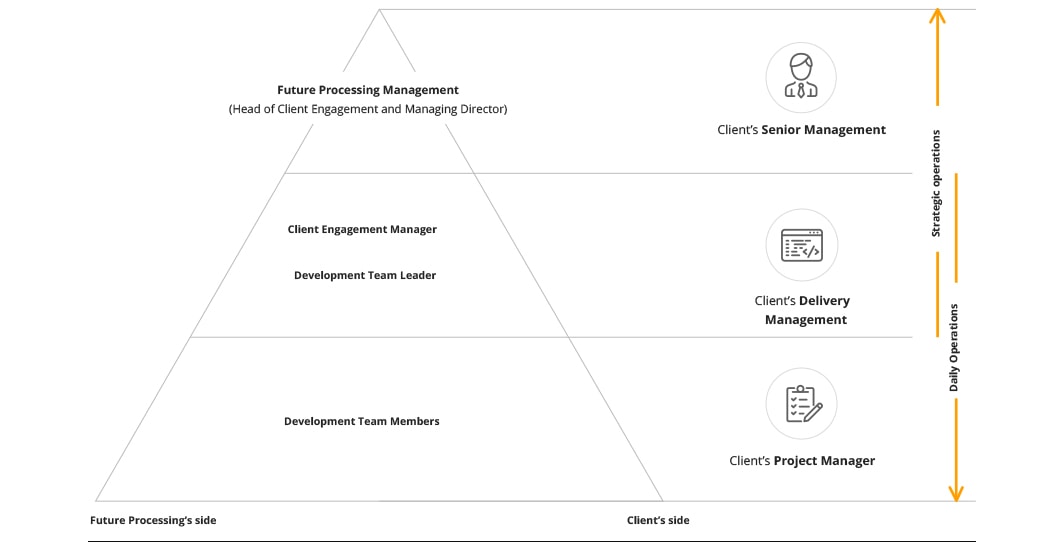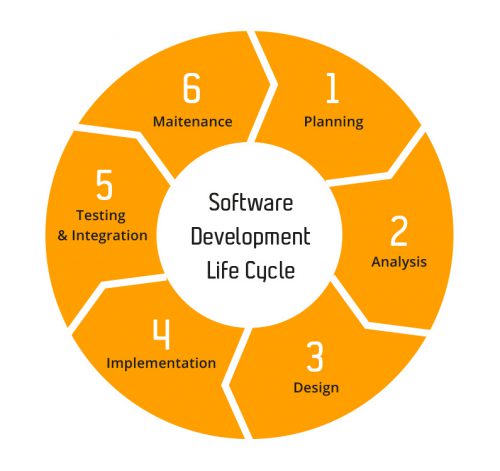
How to prepare a comprehensive and realistic estimation for a software development project?
This is a question that keeps many software house managers awake, and the more complex the project, the harder it is to provide a good estimation. And by good, I mean accurate.
What is Software Development estimation?
Preparing a comprehensive and realistic software development estimation is a big deal, and as many studies have shown, failing to do it properly can undermine even the most promising deal.
PMI’s Pulse of the Profession, after interviewing 5,402 professionals, reported that 52% of projects completed within organisations in the past 12 months experienced scope creep or uncontrolled changes to the project’s scope.
It’s something to think about, isn’t it? And this only makes this part all the more crucial, especially since the client needs to approve and accept the project estimation before you can even start to carry out any tasks.
However, like anything else, this part gets easier with time and experience. And in order to help you get started, I’ve prepared some helpful hints on how to approach estimating software projects.
Why is software project estimation important?
Accurate estimation of software projects is an essential aspect of successful software development. It plays a crucial role in managing uncertainties and helps project managers and software engineering teams to set realistic goals at every stage of the development process.
It allows teams to break up enterprise software projects into smaller tasks and create a plan to finish them on time. This effort estimation prevents excess costs and delays, ensuring products are released on schedule.
Accurate estimations can prevent missed market opportunities by ensuring that projects are completed in a timely manner, aligning product launches or updates with market demands. Additionally, they promote transparency in project management, especially when working with outsourcing partners, as clear estimations set realistic expectations and build trust.
Moreover, estimations play a crucial role in ensuring resources are used wisely, balancing the use of time, money, and team efforts. This helps keep the project efficient and on track. Also, when projects are estimated properly, it boosts collaboration between project manager, development teams and other stakeholders.
It leads to better teamwork and coordination because everyone has a clear picture of what’s expected. This is especially important in projects with multiple teams, helping to avoid confusion and keep everyone aligned.
Lastly, estimation techniques act as a reality check, ensuring the development process stays on track despite the constant pressure to meet deadlines.
Learn more about software development:
What is the Definition of Done (DoD) in software development?
Software architecture in software engineering: types, challenges and best practices
Who is involved in creating estimates for software projects?
Creating a reliable software project estimation requires collaboration between different experts and stakeholders. Project managers are crucial in coordinating the process and integrating diverse perspectives to provide accurate and thorough projections.
Stakeholders, such as customers, sponsors, and end-users, provide opinions on requirements, objectives, and constraints.
In agile environments, cross-functional expertise from many domains, including design, database, server, front-end UI, and QA, cooperatively ensures all aspects are considered for project success.
Additionally, seasoned software developers bring in their knowledge and insights from past project data to enhance the estimation accuracy and dependability of these projections.

8 steps for estimating your software development projects
Focus on collecting and understanding all the software project requirements
You need to take the time to truly understand both the project itself and the client’s needs. Some additional meetings and calls may be necessary but don’t hesitate to ask questions. There’s no room for any guesswork here, as it may backfire later on and result in inadequate estimation.
First, estimate the project scope, then the time and cost
Get to know the functional scope of the project and break it down into time-boxed iterations or other measurable units of requirements. Having a detailed view of all the tasks you need to complete will help you grasp the bigger picture. It will allow you to provide a specific time frame, corresponding costs, and accurate effort estimations.
Take a data-based approach instead of guessing and making assumptions
Every estimation you prepare must be data-driven and based on professional experience – either yours or your team’s. You can use similar projects and historical data as points of reference, but don’t just bet only on your gut feelings, especially since you have to be able to justify every part of your offer.
Get input and second opinions from the software development team
No one knows more about the details of the processes involved than the specialists who will be doing the actual work. Collect any feedback and input from project experts or team leaders; this will keep your project estimation in line with reality and away from any wishful thinking.
Always define risks and search for opportunities
Defining the risks of a project failure is important in terms of being transparent and reliable. You may even want to add some buffers to your estimation and share the risks with your client, but this must be well-argued and equally well-substantiated.
However, the responsibility may also lie entirely on your shoulders, depending on the specific arrangements you come to with the client. And searching for opportunities is just as significant as looking for potential threats during the estimation process: how to make something better and how to do it faster, in a more efficient way.
Don’t overlook this part, as it may lead to opportunities that will give you that extra edge among your potential clients.
Don’t lowball any software estimation just to make it look more appealing to the client
Credibility is everything. Don’t undermine it by lowballing a bid. Instead, if the estimation exceeds your client’s original budget, you may want to prepare different options for them to choose from. For example, you can offer to cut the project down a bit at the beginning and develop it fully in the future when they are able to invest some more.
Don’t take any preliminary software estimation for granted – be ready for the unpredictable
Remember – agile is not just a buzzword these days. It’s a valid methodology which is expressed by constant collaboration with a client and being able to smoothly respond to changes.
You must first realise (and then make sure your client is also aware of this fact) that a preliminary estimation may change according to any shifts in the project requirements or external conditions (like the pricing of third-party services).
Measure, make adjustments and keep your client informed
This is strongly correlated with the point above. Keeping your finger on the pulse (in project management) refers to measuring the effectiveness of your work, tracking the progress, adjusting to the current situation, and, first and foremost, keeping the client posted.
This way, your client won’t be too shocked by any changes you need to make, and you’ll both be better prepared for things that cannot be predicted beforehand.
Common software estimation techniques
Here are six software estimation techniques commonly used in project management and software development:
Expert judgment: This technique relies on the experience and intuition of experts to estimate project size, effort, and duration.
Analogous estimation (comparative estimation): This method involves comparing the current project with similar past projects. The estimates are based on historical data and the similarities between the new project and the completed ones. It’s quicker but relies heavily on the availability of accurate historical data.
Parametric estimation: This approach uses statistical relationships between historical data and other variables (like lines of code or function points) to estimate project effort, cost, and duration. It’s more quantitative and relies on statistical or mathematical approach.
Bottom-Up estimation: In this method, the project is broken down into smaller components, and each component is estimated separately. The estimates for all components are then summed up to get the total project estimate. It’s detailed and can be more accurate but is time-consuming.
Three-Point estimation: This technique, often used in conjunction with PERT (Program Evaluation and Review Technique), involves making three estimates for every task: the best-case estimate, the most likely estimate, and the worst-case estimate. These are then used to calculate an average estimate that accounts for uncertainty.
Function Point Analysis (FPA): This is a method to estimate the size of a software project by calculating the ‘function points’. FPA is useful in the early stages of project development when detailed information is not yet available.
Each of these techniques has its own advantages and applicability, depending on the project’s size, complexity, and stage of development, as well as the availability of data and expertise.
Benefits of using software estimation techniques in project planning
If you are able to prepare an estimation that is both comprehensive and realistic – you are already halfway on the road to success and acquiring new clients and future projects. This shows them that you and your team are dependable and responsive, which lays the foundation for a stable, fluctuation-resistant work environment.
Plus, it goes side-by-side with other benefits of cooperation that are harder to measure, like:
enhanced transparency,
increased trust,
better reputation in the industry,
less stress, which is usually correlated with uncertainty,
increased satisfaction of customers and stakeholders,
higher probability of a successful project and continued cooperation.
It’s totally worth it to keep learning about how to prepare precise estimations so you can keep optimising the process for greater accuracy. This simply translates to increased profits and also helps you maintain a competitive advantage in the market.
Software development life cycle: how Future Processing could help?
It’s really important to estimate software projects accurately if you want them to be successful.
That’s where the Software Development Life Cycle (SDLC) comes in handy. It’s like a roadmap that helps teams design and develop software in an efficient and cost-effective way. One of the great things about SDLC is that it helps with planning and scheduling so projects meet the client’s quality standards and expectations.

Future Processing is the perfect choice for your next software development project! They have a unique software development approach tailored to your needs. Their team is experienced, adaptable, and ethical, which means they will deliver high-quality work that meets your standards.
Contact Future Processing today, take advantage of our software design consultancy services and rest assured that your project is in good hands!



